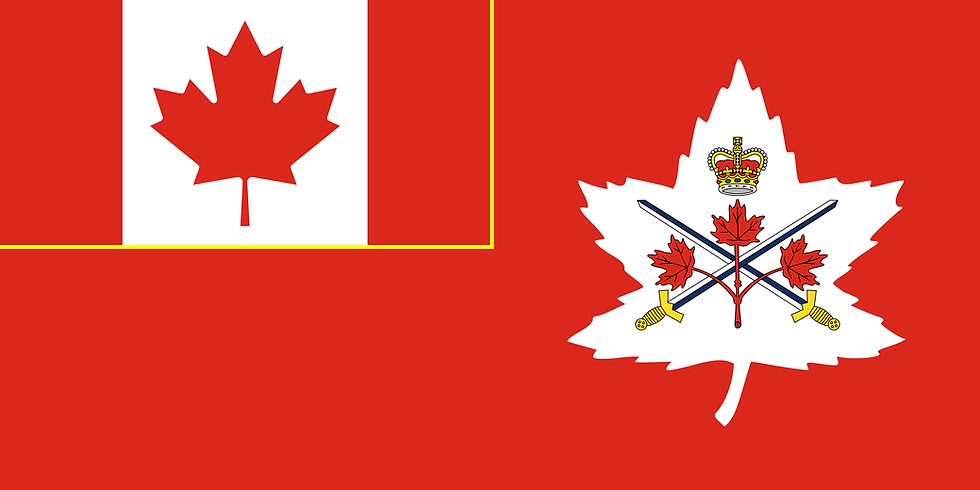The Canadian Armed Forces: creating a central pillar of NATO
- Matthew Parish
- 19 hours ago
- 3 min read

The Canadian Armed Forces (CAF), comprising the Canadian Army, Royal Canadian Navy (RCN), and Royal Canadian Air Force (RCAF), play a crucial role in national defence and international commitments, notably within the North Atlantic Treaty Organization (NATO). As of early 2025, the CAF faces several challenges and opportunities in terms of personnel strength, equipment modernisation, and defence spending, especially in light of evolving geopolitical dynamics and strained relations with the United States.
Personnel Strength and Population Ratio
The CAF maintains approximately 63,500 Regular Force members and 22,500 Reserve Force members, totaling around 86,000 personnel. This figure is approximately 15,500 short of the authorised statutory strength, indicating recruitment and retention challenges. Given Canada’s population of about 38 million, this equates to roughly 0.23% of the population serving in the military. In comparison, other NATO countries like the United States have approximately 0.4% of their population in active military service, highlighting a relatively smaller proportion for Canada.
Equipment and Materiel Quality
Canadian Army: The Army is undergoing modernization efforts, including the replacement of older platforms such as the Light Armoured Vehicle (LAV) II and III with the newer LAV 6.0. Additionally, Canada has initiated the procurement of up to 98 new 155mm self-propelled howitzers to enhance artillery capabilities.
Royal Canadian Navy (RCN): As of February 2024, the RCN operates a diverse fleet, including 12 Halifax-class frigates, 12 Kingston-class coastal defense vessels, 4 Victoria-class submarines, 4 Harry DeWolf-class offshore patrol vessels, and several auxiliary vessels. While these assets provide a balanced maritime capability, many vessels are ageing and require upgrades or replacements to meet modern naval warfare standards.
Royal Canadian Air Force (RCAF): The RCAF maintains approximately 406 aircraft, making it the third-largest air force in the Americas. The fleet includes CF-188 Hornets (CF-18s), which have been in service since the 1980s. Recent participation in programmes like the Weapons System Evaluation Program-East 25.03 demonstrates efforts to maintain combat readiness. However modernisation is necessary to replace ageing platforms with fifth-generation fighters to ensure competitiveness.
Defence Spending and NATO Commitments
In the fiscal year 2024-25, Canada’s defence spending is projected to reach 1.37% of its GDP, with 18.6% allocated to major equipment. This falls well short of NATO’s guideline for member nations to allocate 2% of GDP to defence. Despite a 20% increase in defence spending by NATO’s European members and Canada in 2024, Canada remains far below the alliance’s target. This shortfall has led to increased pressure from NATO allies for Canada to enhance her defence budget.
Geopolitical Context and US-Canada Relations
Recent developments have strained US-Canada relations, particularly following President Donald Trump’s imposition of tariffs on Canadian goods and implicit threats toward Canadian sovereignty. In response, Canada has implemented countermeasures, including targeted tariffs on US vehicles. These tensions have prompted Canada to seek stronger alliances with European nations and other like-minded countries to safeguard her economic and security interests.
Modernisation Efforts and European Support
To address capability gaps and enhance her military effectiveness within NATO, Canada is pursuing several modernisation initiatives:
• Helicopter Investment: Canada has announced plans for a nearly $13 billion investment to acquire new military helicopters, aiming to replace aging fleets and bolster operational capabilities.
• Artillery Modernisation: The procurement of up to 98 new 155mm self-propelled howitzers is underway to enhance the Army’s indirect fire support.
Given the diplomatic rift with the US, Canada is exploring deeper defence collaborations with European allies. The European Union has demonstrated support by committing €10 million alongside Canada’s existing contributions to joint security initiatives. Further European assistance could include joint training exercises, technology sharing, and coordinated procurement programmes to facilitate the modernisation of Canada’s armed forces.
Investment Requirements for a Modern Military
Achieving a modern, sustainable military aligned with 21st-century NATO standards necessitates significant investment. Increasing defense spending to meet the 2% GDP target would provide additional resources for personnel expansion, equipment procurement, and infrastructure development. Collaborative ventures with European partners could also offset costs through shared research and development, economies of scale in procurement, and interoperability initiatives.
Towards a Canadian future in NATO
The Canadian Armed Forces are at a pivotal juncture, facing internal challenges related to personnel and equipment, as well as external pressures from shifting geopolitical alliances. By increasing defence spending, pursuing comprehensive modernisation programmes, and strengthening partnerships with European allies, Canada can enhance her military capabilities and reaffirm her commitment to NATO, ensuring national security and contributing effectively to collective defence efforts.
